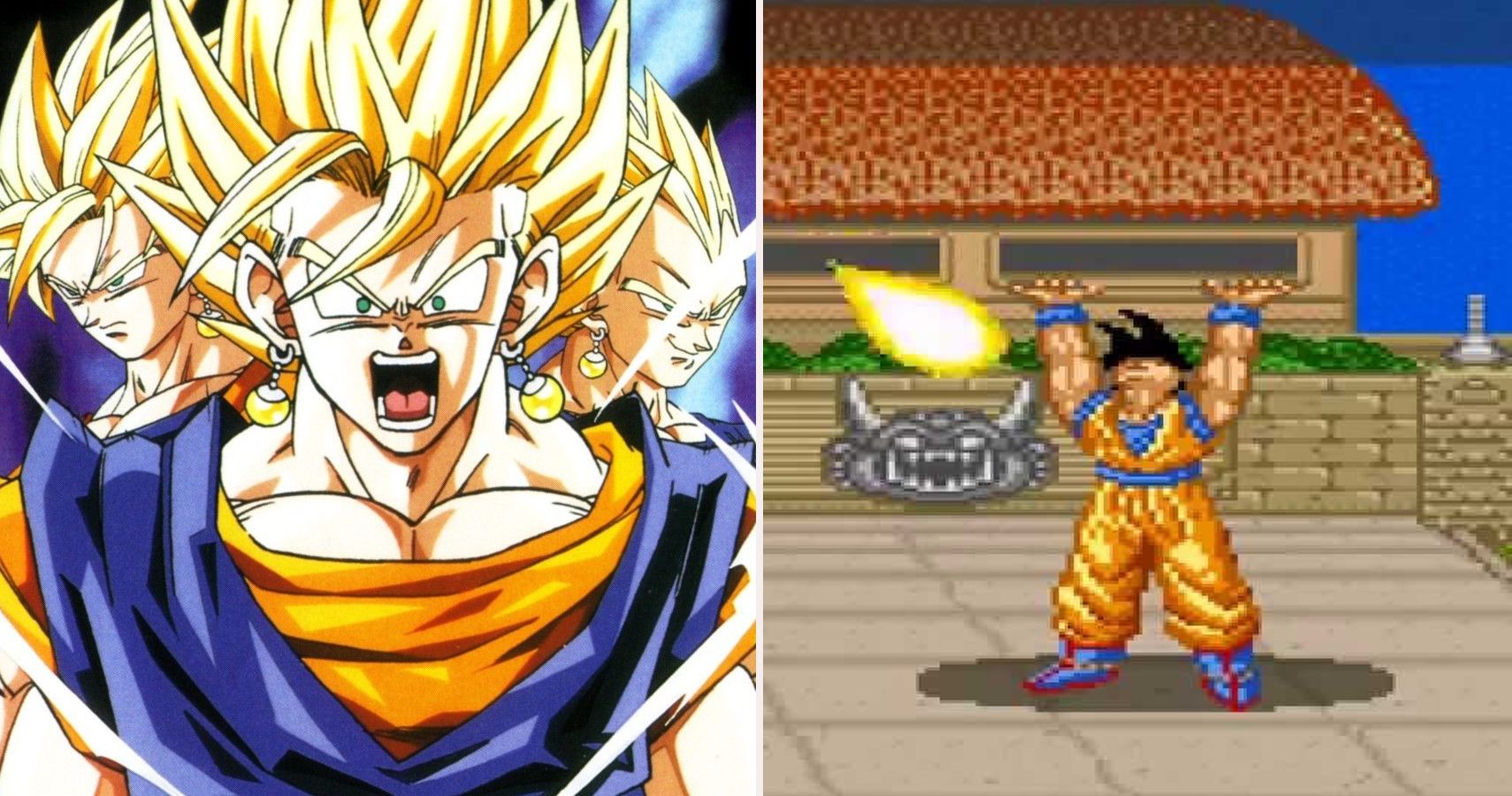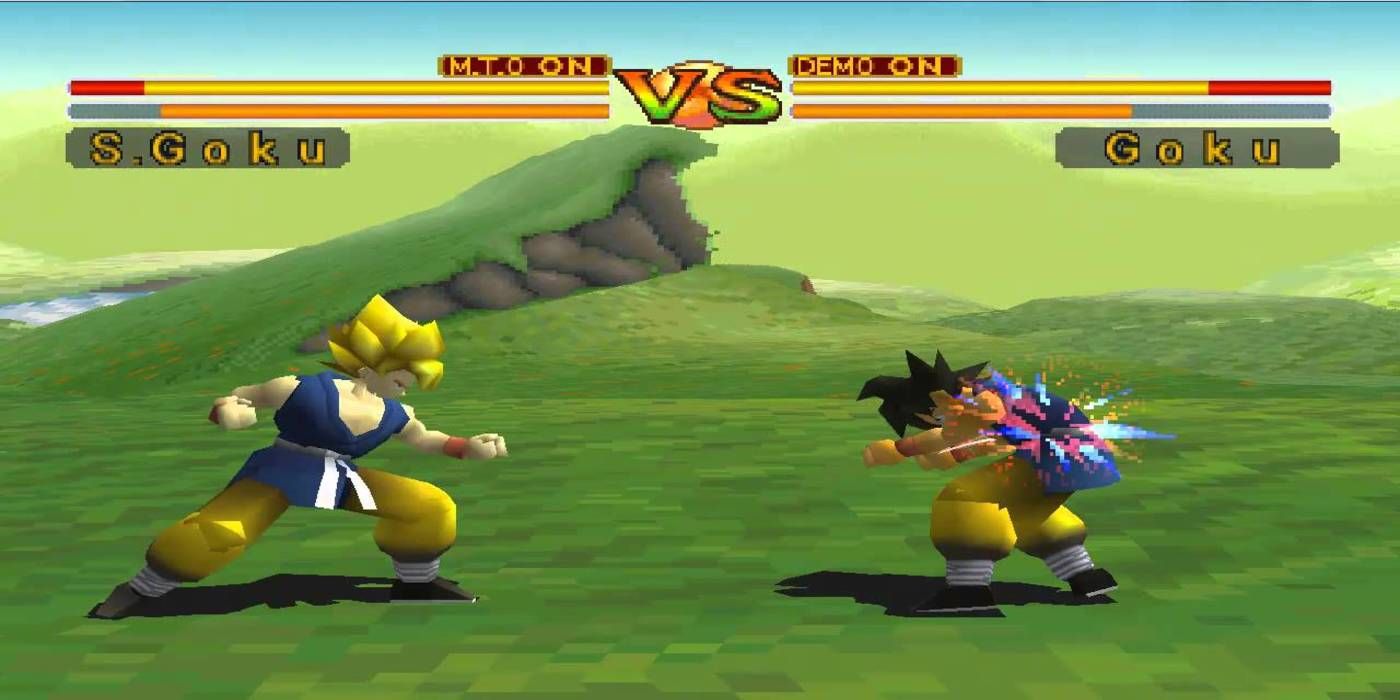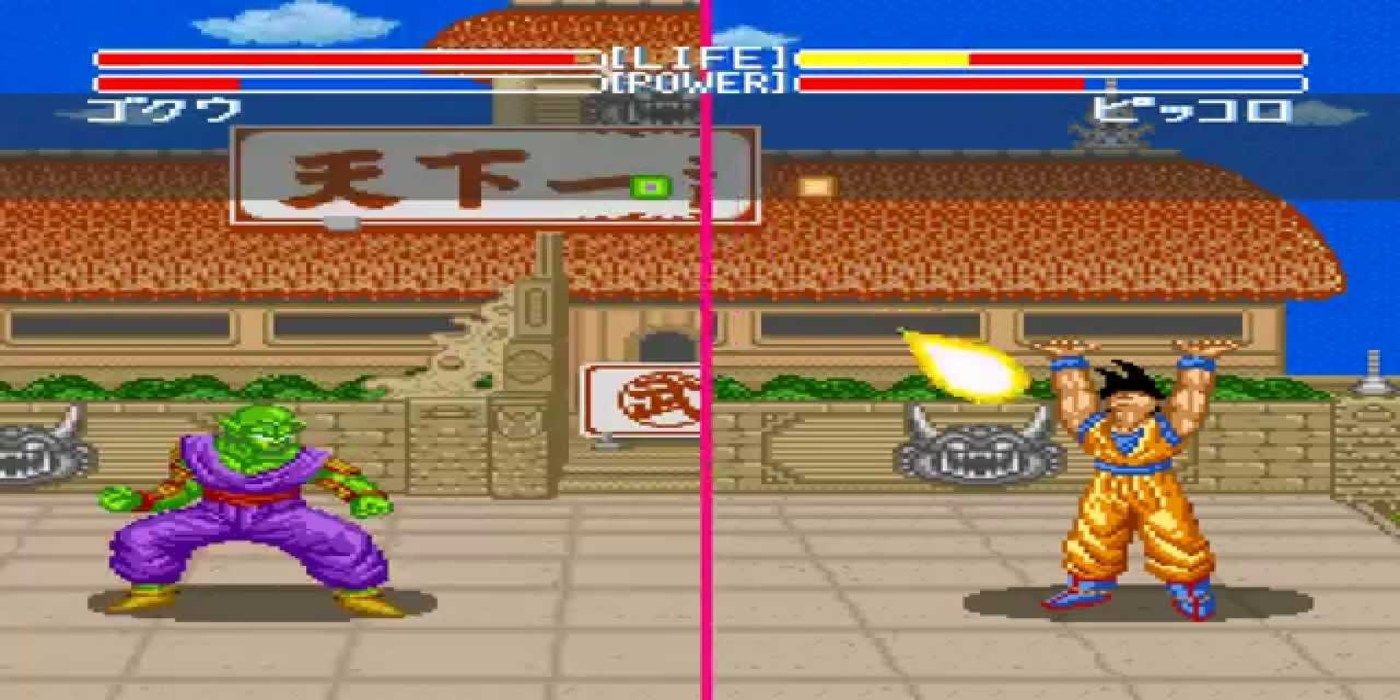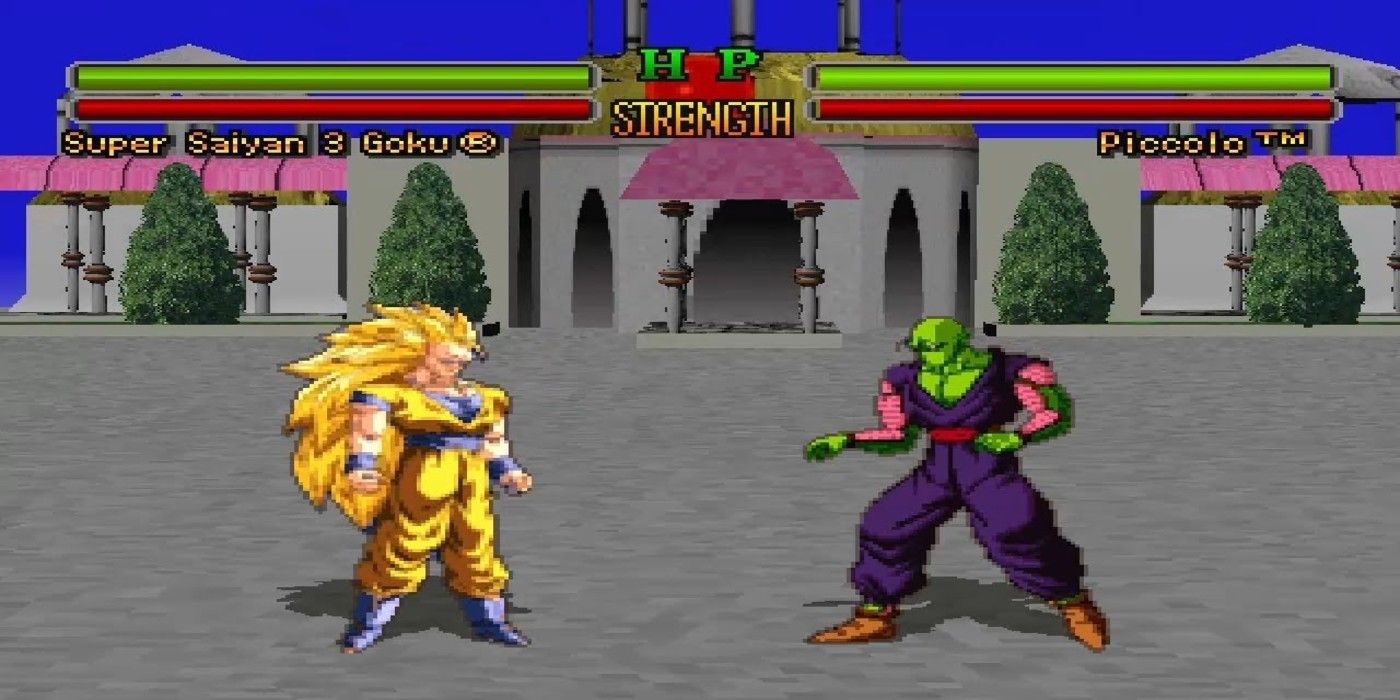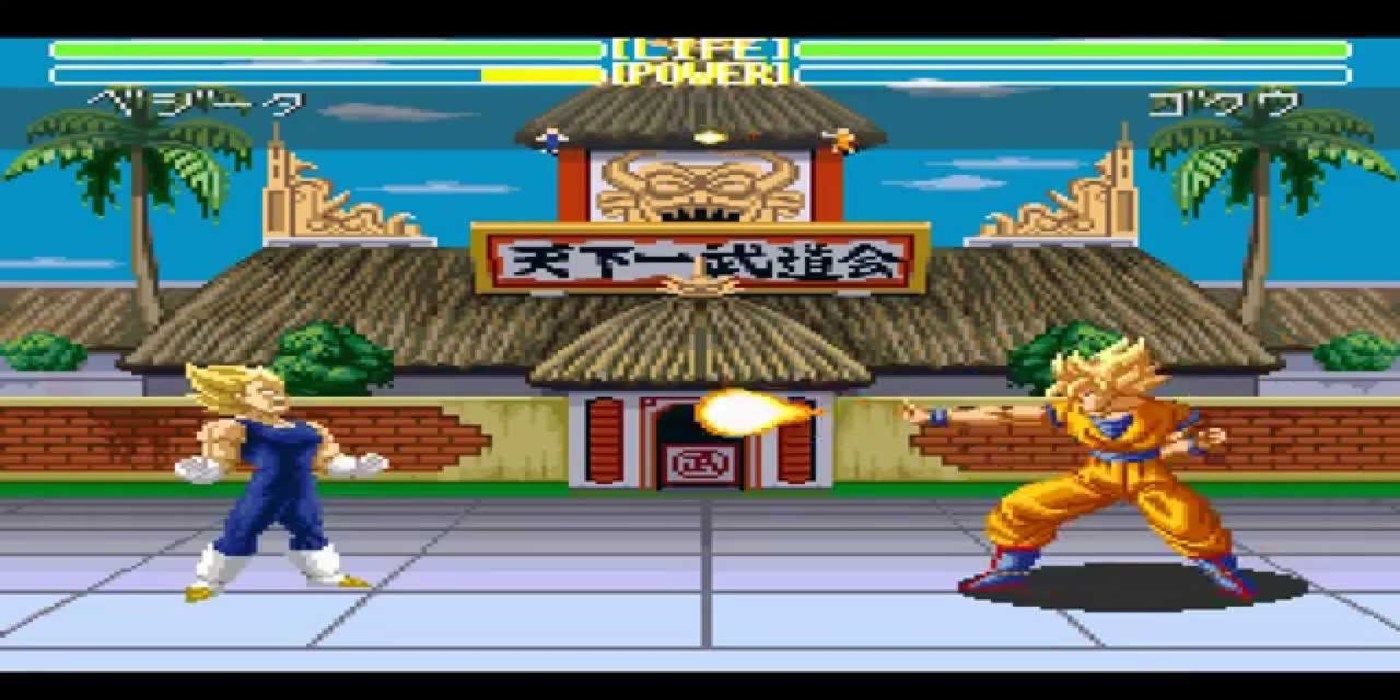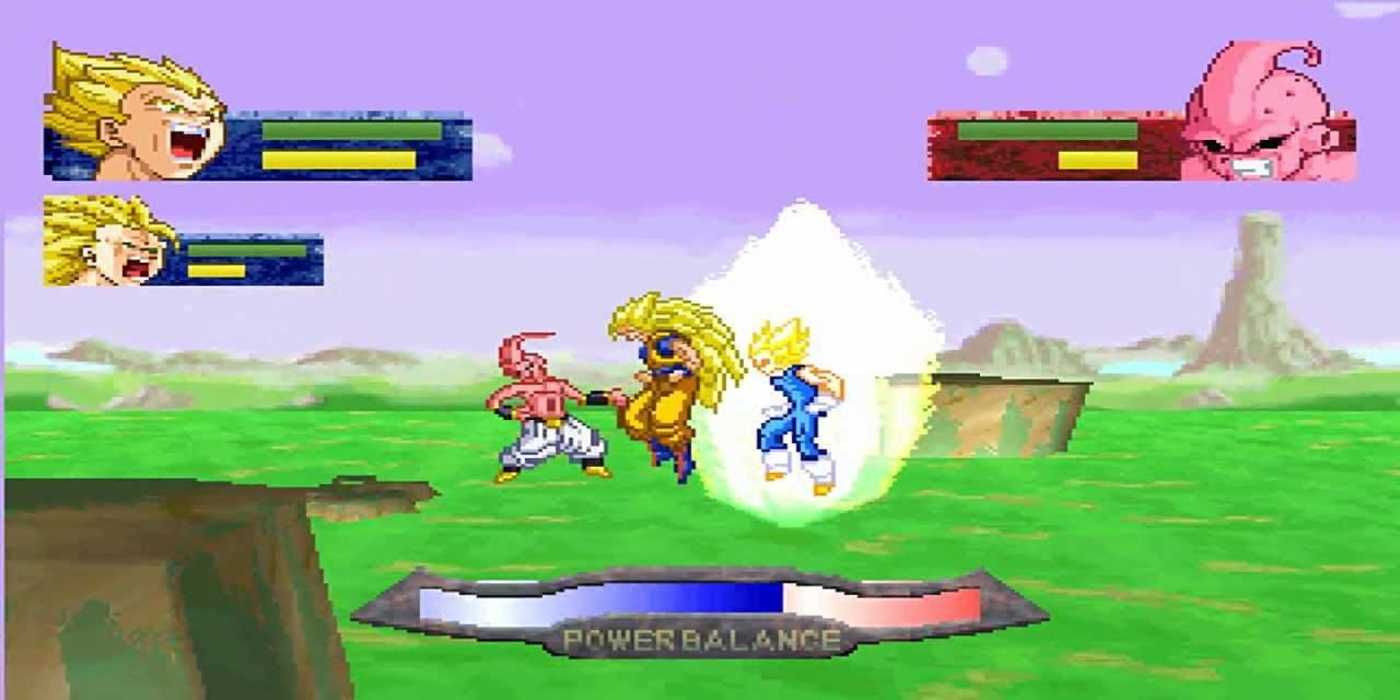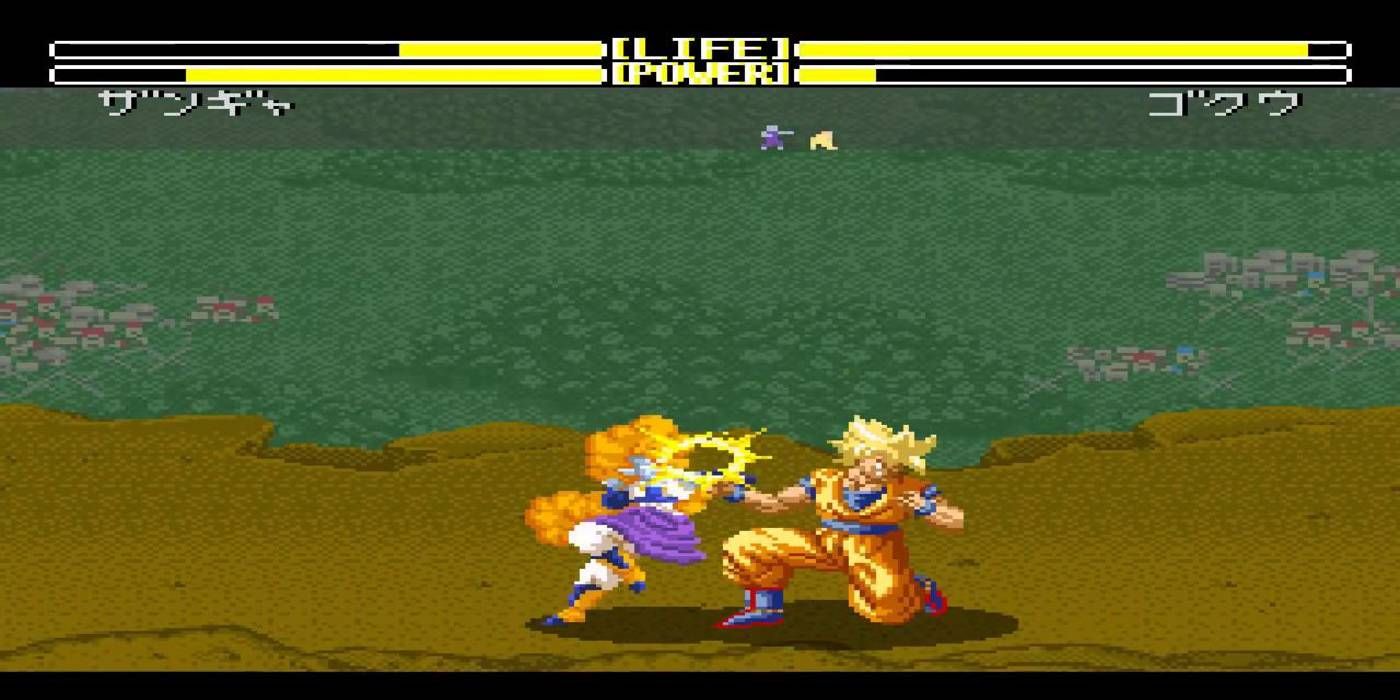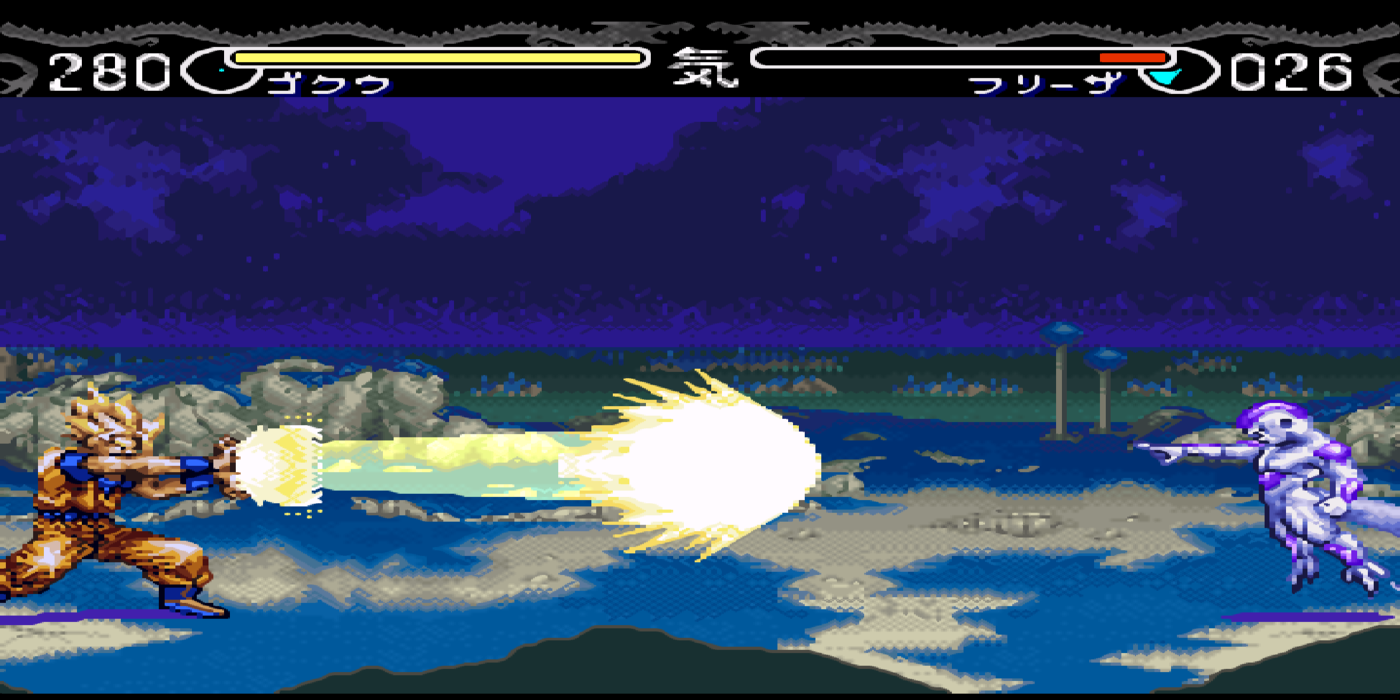For as much as the video game side of Dragon Ball has been catering to the fighting genre for the past two decades or so, the franchise’s video game history is actually rooted in the RPG genre. This isn’t to say that all Dragon Ball games were RPGs back in the day (the very first was a traditional action-platformer), but it’s hard to deny how little of a presence Dragon Ball RPGs have this day.
Naturally, this has the consequence of there not being many retro Dragon Ball fighters to revisit— at least not between the Super Nintendo and PlayStation 1 alone. All the same, this isn’t necessarily a bad thing. If anything, modern fans had too many Dragon Ball fighting games to choose from for too long. A smaller roster of games can help fans appreciate those truly special titles.
7 Final Bout
On the flip side, a smaller roster of games also makes the worst ones stand out even worse. There’s very little to appreciate about Final Bout other than its now eclectic roster for a Dragon Ball game. A mix of Dragon Ball GT and DBZ’s greatest hits, Final Bout is one of the most incohesive games in the franchise. It’s clunky, imbalanced, and aesthetically quite ugly compared to most games from its era.
Final Bout also served as many’s introduction to Dragon Ball overseas as the game’s release predated the series’ boom in popularity in the west. That said, while Final Bout should be everyone’s last choice for a Dragon Ball game, it is worth taking a deeper look into. It features a completely different English voice cast, has some genuinely great music, and can be reasonably fun against a fun.
6 Super Butoden
The first Super Butoden game is rough around the edges. Its combos aren’t smooth, combat is on the clunky side, and it’s just not all that engaging in the grand scheme of things. The gameplay loop is charming, but that’s about it. It’s hard to get depth out of the game without a deeper understanding of the mechanics, and Super Butoden isn’t a fun game to master.
But it is a fun game to play casually! The story mode uniquely covers the end of the 23rd Tenkaichi Budokai up to the Cell Games where Goku, Vegeta, or Piccolo can all defeat Cell. Butoden also features the largest roster of the SNES fighting games, so it’s the best value for those just looking to recreate key fights.
5 Ultimate Battle 22
Ultimate Battle 22 is a game that came late in the United States and paid the price for it. Released in 2003 despite being developed & released in Japan in 1995, Ultimate Battle 22 was ravaged by critics with several 1s across the board. As a PS1 release in the 21st century, Ultimate Battle 22 was compared to fighting games of the time.
Which was tremendously unfair of critics as that has no bearing on the game’s quality. It isn’t that good by any means whatsoever, but it’s a perfectly acceptable early PS1 fighting game. The music is outstanding, character models are ripped straight out the anime, and despite long load times, Ultimate Battle 22 has a decent bit of content to get through.
4 Super Butoden 3
Super Butoden 3’s biggest flaw is that it’s the only game in a trilogy with great fighting game story modes to not feature a story mode. Where Super Butoden had story length and Super Butoden 2 had story depth, Super Butoden 3 has an arcade mode. Which is better than nothing, right? It’s certainly a massive disappointment and a clear sign that the game was rushed.
All the same, it features amazing music typical of the Super Butoden series, some great visuals, and genuinely fun combat. As Super Butoden 2 increased the depth of combat by a decent bit, Super Butoden 3 benefits thanks to a well established foundation. The roster’s also fairly strange since the game ends up covering only half of the Buu arc. It’s not often Dabra and Kaioshin are featured as playable characters.
3 The Legend
The Legend is such an insane Dragon Ball game that it’s an honest to Kami shame it never left Europe or Japan. Less a fighting game and more a straight up Dragon Ball Z simulator, The Legend covers everything from the start of the Saiyan arc to the end of Dragon Ball Z. It’s a comprehensive story mode with a wide cast that ends up covering lots of ground.
Not only are battles fairly long, there are mid-battle cutscenes that be triggered by matching the events of the game up with the anime. That’s another cool detail about The Legend. It’s possible to deviate from the story during battles, giving the story a ton of charm and personality. It’s worth playing if only because it’s one of the most unique games in the series.
2 Super Butoden 2
Super Butoden 2 is one of the best fighting games on the SNES in general. One of the few games developed during that brief period where Gohan was the unquestionable protagonist, Super Butoden 2 goes so far to make Goku a secret character (alongside Broly’s first video game appearance!) There’s a considerable amount of depth added to the combat. Movement is smoother, hits have more impact, and the game isn’t nearly as sluggish.
The real meat of the game is in its story mode, though. Covering the start of the Cell Games before loosely adapting Bojack Unbound and Broly: The Legendary Super Saiyan, players can choose from Gohan, Trunks, Piccolo, and Vegeta to play, all of which have their own story with branching paths. Super Butoden 2 ends up wildly addictive as a result.
1 Hyper Dimension
Hyper Dimension’s only real flaw is that its music isn’t nearly as good as the Super Butoden trilogy’s. Other than that, it’s as good as Dragon Ball action got before the PlayStation 2. With sprites that look straight out of the manga, an incredible color palette, and some of the most creative combat in the series, Hyper Dimension is a game with a surprising amount of depth.
Since health and Ki are linked together, super moves end up draining a player’s health. It’s important to attack strategically and to charge up at the appropriate moments. The story only covers the end of the Freeza arc to the end of the Buu arc, but it’s well handled and reasonably challenging. Hyper Dimension is worth sinking time into, for Dragon Ball fans or otherwise.

